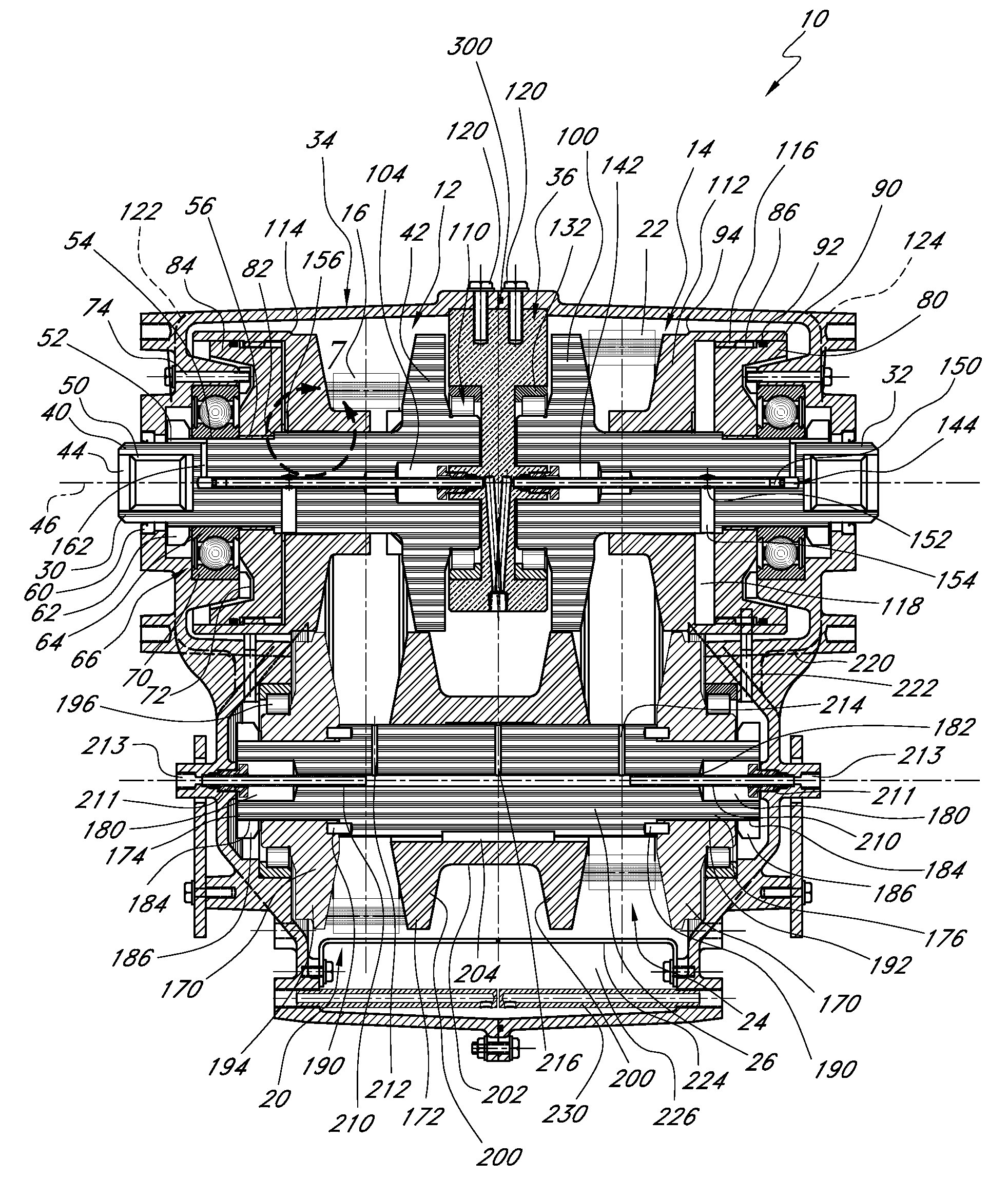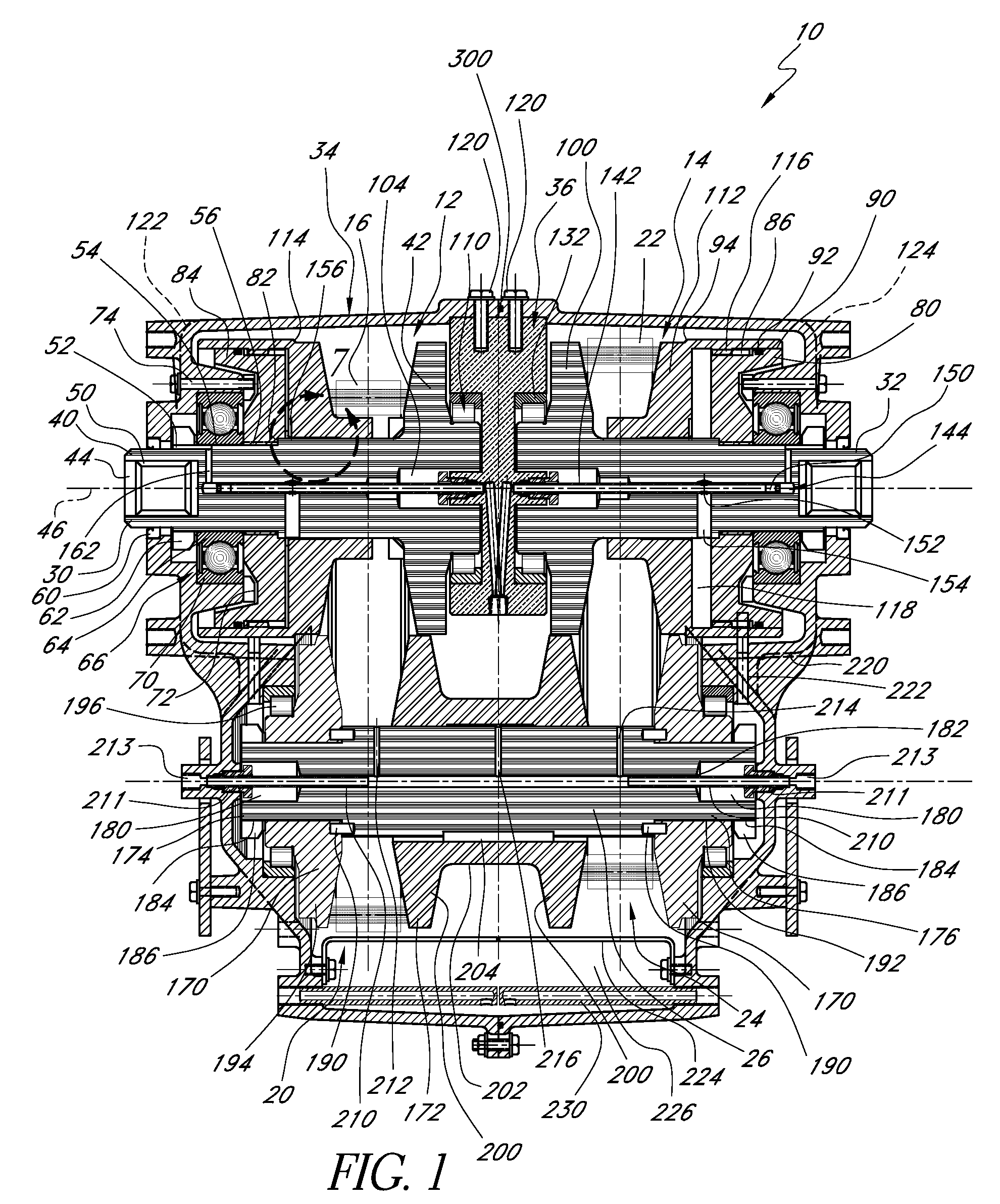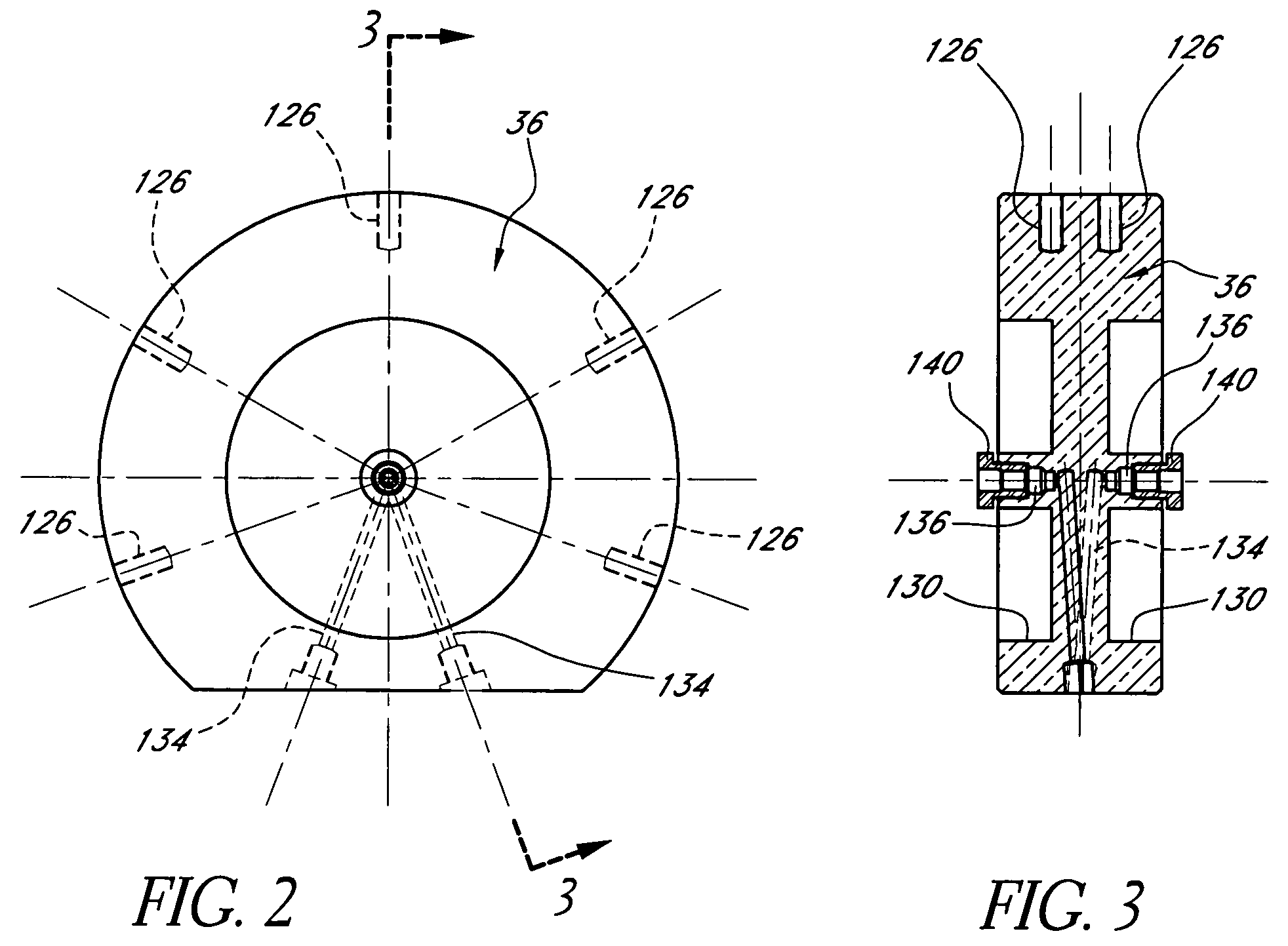In-series two chain continuously variable transmission
a continuously variable transmission and chain technology, applied in the direction of gearing, cycle equipment, hoisting equipment, etc., can solve the problems of limited number of vehicles featuring such transmissions, limited application of belt/chain drive in larger passenger vehicles and medium-sized trucks, and inability to use single belt cvt technology, etc., to achieve adequate on-road speed, improve fuel economy, and increase the size and weight of the cvt
- Summary
- Abstract
- Description
- Claims
- Application Information
AI Technical Summary
Benefits of technology
Problems solved by technology
Method used
Image
Examples
Embodiment Construction
[0017]FIG. 1 illustrates an embodiment of a transmission 10 that is arranged and configured in accordance with certain features, aspects and advantages of the present invention. While shown in the context of a dual belt transmission, some of the features, aspects and advantages can be used in single belt transmission, such as that shown in copending U.S. patent application Ser. No. 11 / 033,206, filed on the same date as this application, entitled SINGLE CHAIN CONTINUOUSLY VARIABLE TRANSMISSION, and which is hereby incorporated by reference in its entirety.
[0018]The illustrated transmission 10 generally comprises an input pulley assembly 12 and an output pulley assembly 14. A first chain 16 connects the input pulley assembly 12 to a first transfer pulley assembly 20 and a second chain 22 connects a second transfer pulley assembly 24 to the output pulley assembly 14. The two transfer pulley assemblies 20, 24 are mounted on a common countershaft 26.
[0019]Thus, the illustrated transmissi...
PUM
 Login to View More
Login to View More Abstract
Description
Claims
Application Information
 Login to View More
Login to View More - R&D
- Intellectual Property
- Life Sciences
- Materials
- Tech Scout
- Unparalleled Data Quality
- Higher Quality Content
- 60% Fewer Hallucinations
Browse by: Latest US Patents, China's latest patents, Technical Efficacy Thesaurus, Application Domain, Technology Topic, Popular Technical Reports.
© 2025 PatSnap. All rights reserved.Legal|Privacy policy|Modern Slavery Act Transparency Statement|Sitemap|About US| Contact US: help@patsnap.com



